The Chapelof the Holy Chalice
The Holy Chalice of the Last Supper
The Chapterhouse
It was built by order of Bishop Vidal de Blanes between 1365-1369. It was here that the Cortes of the Kingdom were held and theology classes were given, among others by St. Vincent Ferrer.
In 1916 the Holy Chalice was moved to the chapterhouse, which became the current chapel.
Before 1916
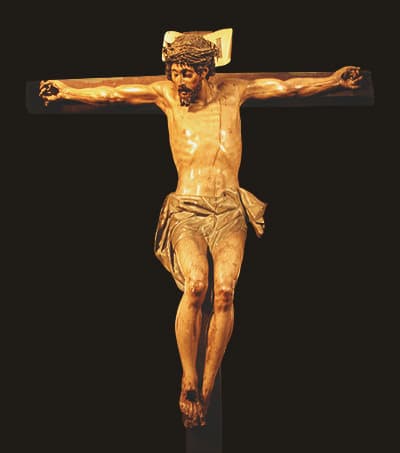
The Christ of the Good Death 17th century
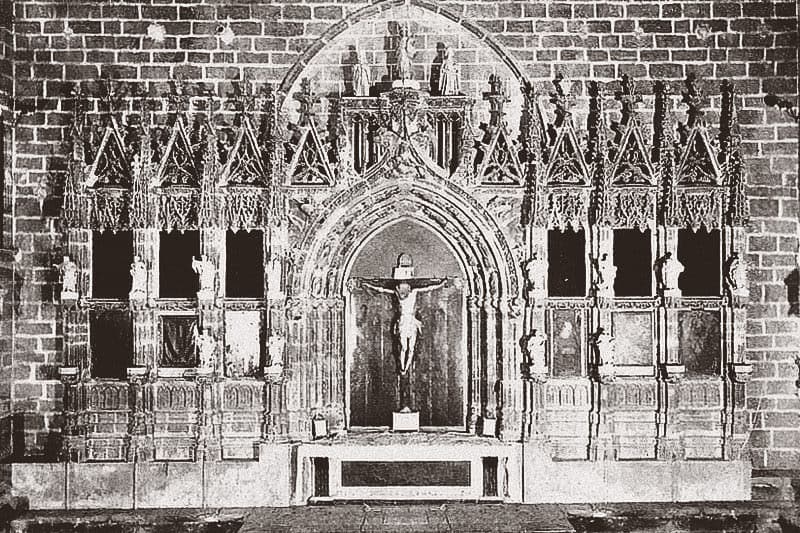
Chapterhouse before the transfer of the Holy Chalice, at the beginning of the 20th century.
Style and description
The chapel is in the florid Gothic style (14th century); it has a square floor plan and smooth, carved stone walls.
It measures 13 metres on each side and 16 metres in height, and is covered with a high ribbed star-shaped vault whose ribs extend to rest on polychrome corbels.
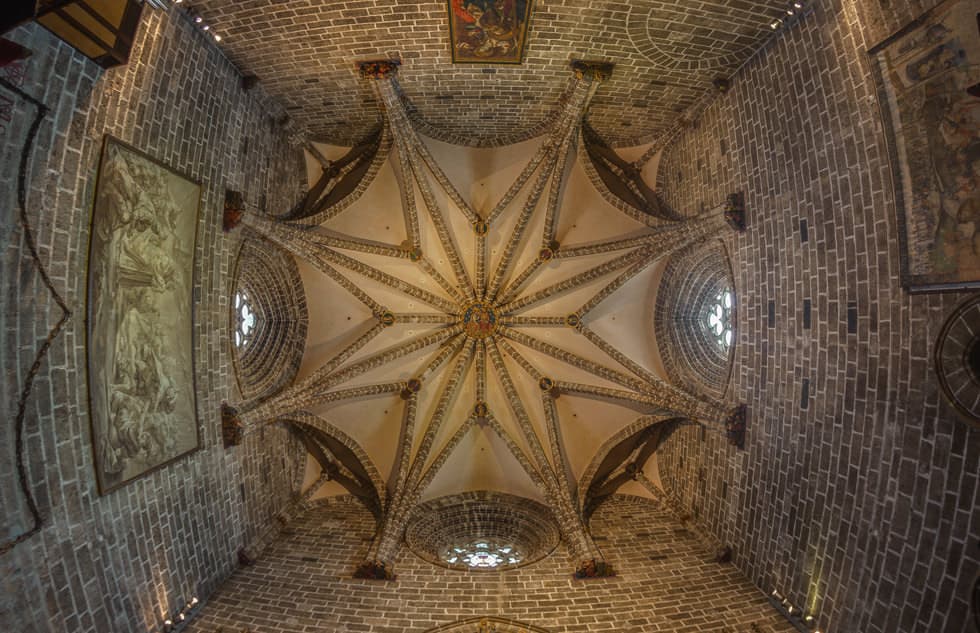
Star-shaped ribbed vaulting.© Diego Delso, delso.photo, CC-BY-SA Licence
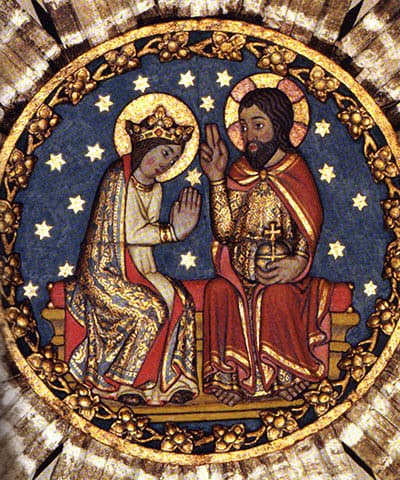 The coronation of Our Lady in heaven after the the Assumption.
The coronation of Our Lady in heaven after the the Assumption.
In the vault
In the keystones of the vault are the twelve Apostles and, in the central keystone, the coronation of the Virgin in heaven after the Assumption, the titular mystery of this Cathedral.
This space was not affected by the neoclassical reform of the 18th century and the alabaster altarpiece, the former entrance to the choir (15th century), was placed here.
Alabaster Altarpiece
Former entrance to the choir(15th century)
The twelve reliefs by the Florentine Giuliano di Nofri stand out in this frame. The lower scenes are from the Old Testament and are a prophecy of the upper scenes from the New Testament.
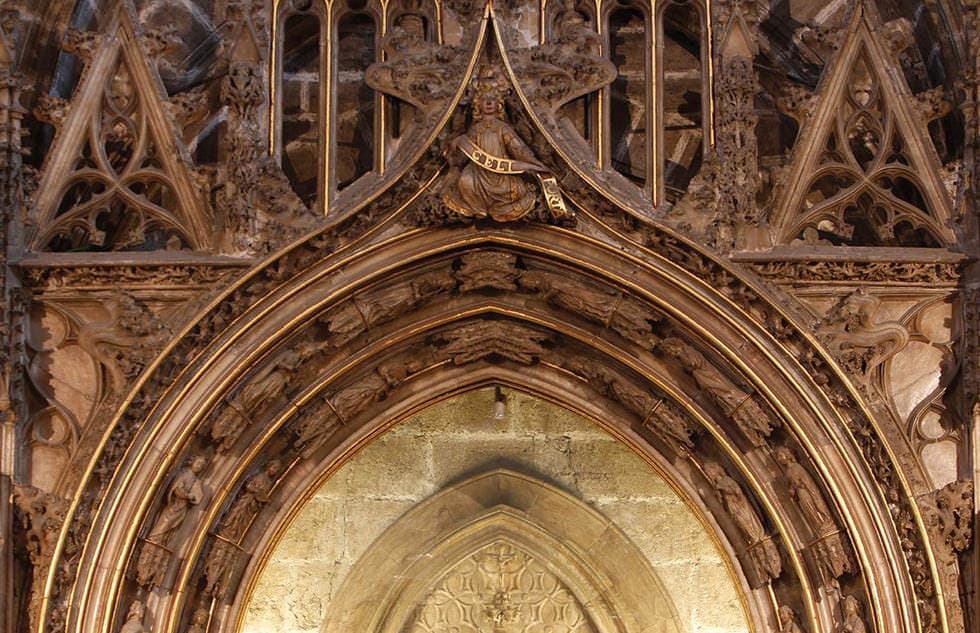
Detail of the upper part of the alabaster altarpiece.
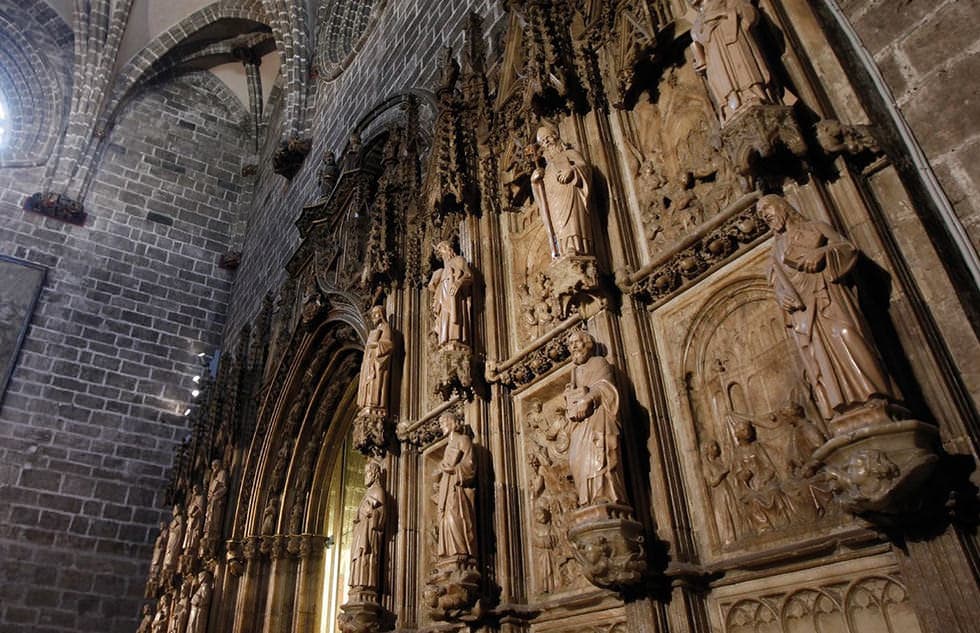
Side view of the portico that today houses the Holy Chalice.

The Holy Spirit descends on Mary and the apostles. (Acts 2, 1-4)
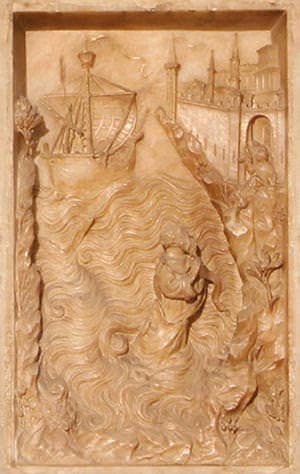
The prophet Jonah is thrown back by the fish on the shore. (Jonah 2, 1 and 2)
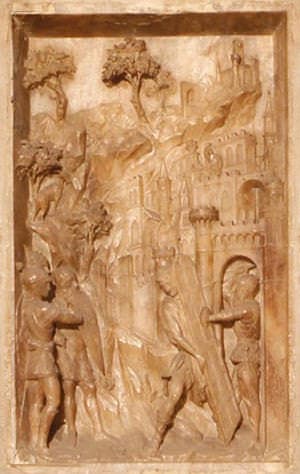
Samson tears open the gates of the city of Gaza. (Judges 16, 3)
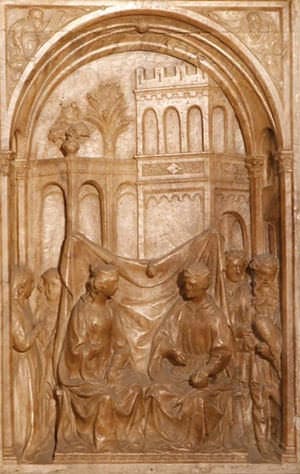
King Solomon receives his mother. (Kings 2, 19-20)
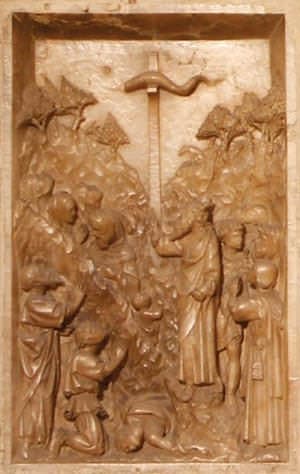
Moses lifts up the bronze serpent in the desert. (Num 21,4-9)
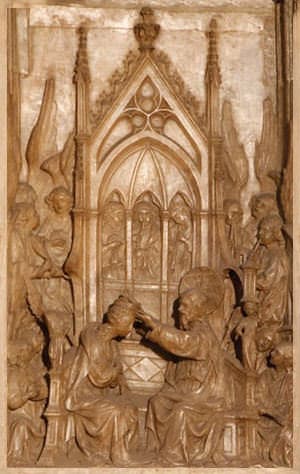
Jesus Christ crowns his Mother as queen in heaven. (Romans 8, 29-30)
On the walls
On the walls you can see the «Adoration of the Kings», a fresco by Nicolás Florentino (1472), «San Cristóbal» by Gonçal Peris, the “Expulsion of the Moors” by Vicente López and the chains that closed the port of Marseilles, brought by Alfonso V the Magnanimous in the 15th century.
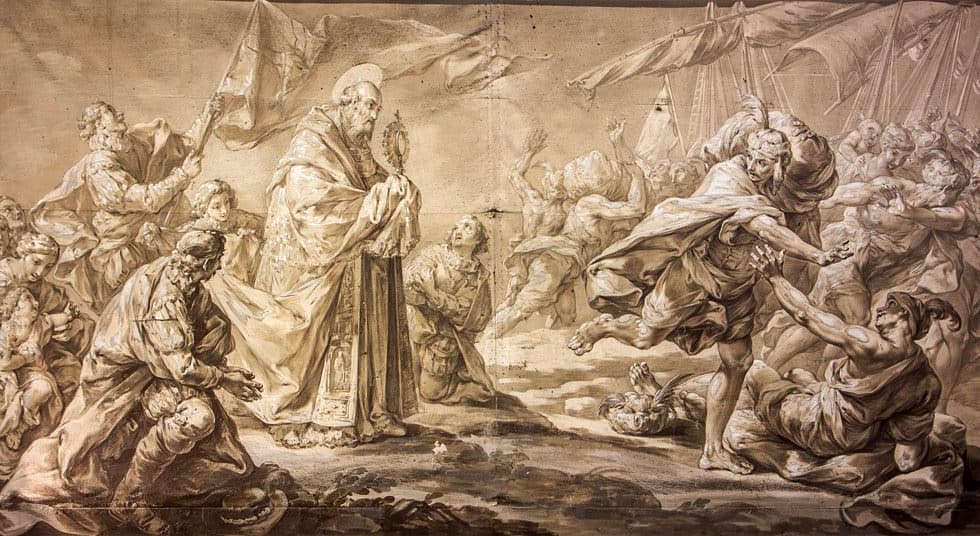
Expulsion of the MoorsOil painting by Vicente López19th century
The entrance door and the passageway
When the naves were extended in the 15th century to reach the belfry and the chapterhouse, the architect Pere Compte, also the architect of the Lonja de Valencia, built the entrance passageway to the old hall in 1496.
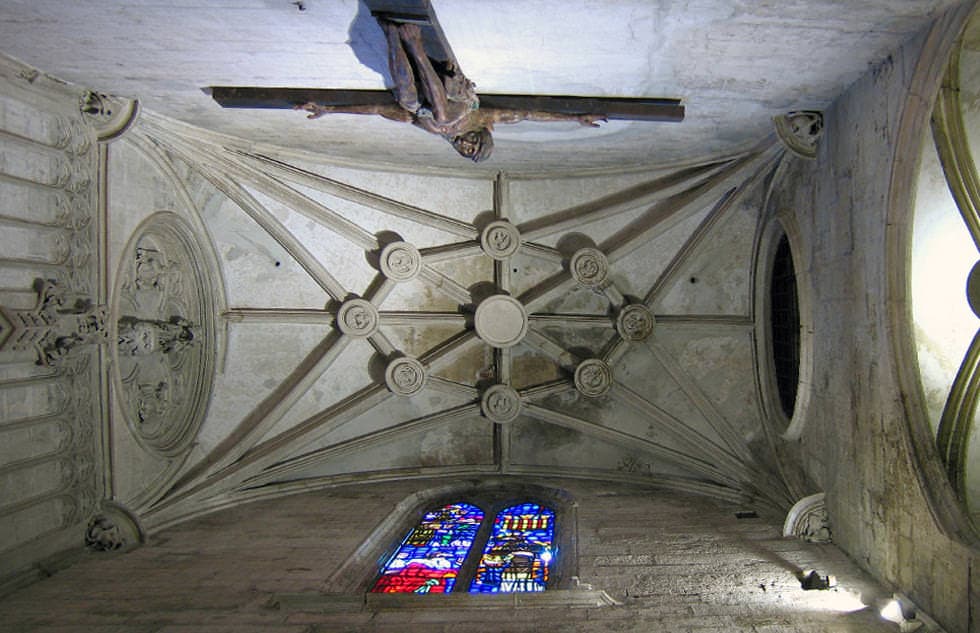
Detail of the Pere Comte ceiling in the access corridor. © Felivet
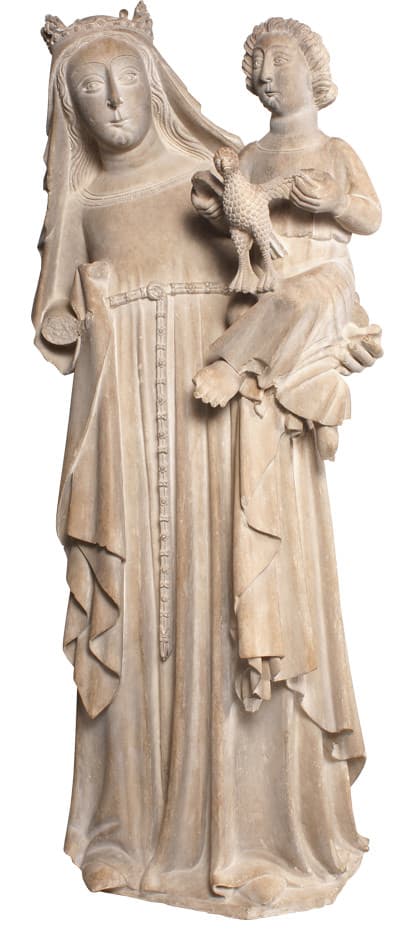
Virgin and Child Jesus. Limestone sculpture. 14th century
On one side of the aisle you can see, among others, the funerary monument of Bishop Vidal de Planes, builder of the Chapterhouse, and the “Adoration of the Shepherds”, a fresco (1472) by Francesco Pagano de Neapoli and Paolo de San Leocadio, from the Chapterhouse, transferred to canvas, which was the test for the decoration of the main chapel.